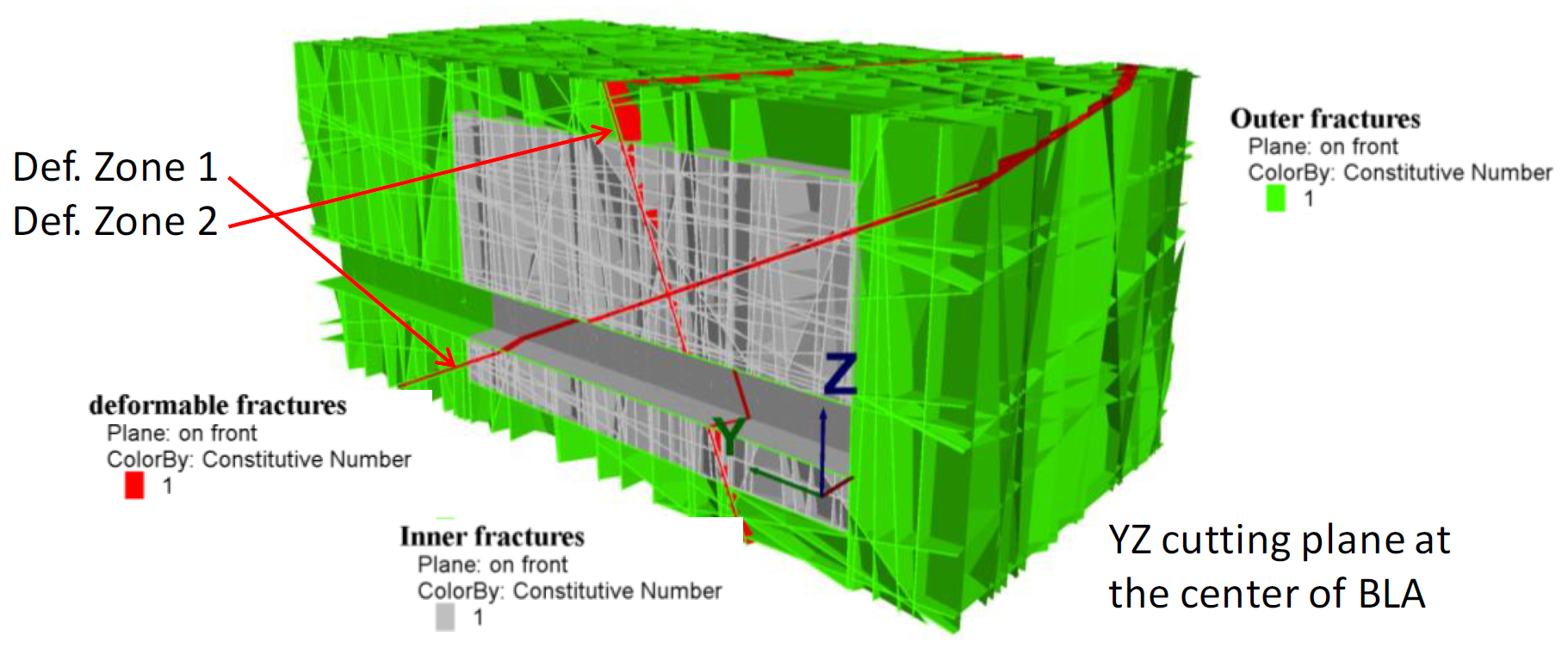Long Term Cavern Stability of the SFR Facility
Project Description
A numerical analysis was conducted to assess the long term stability of the rock caverns BMA and BLA for the final repository of low and middle level nuclear waste at the SFR facility in Forsmark, Sweden. The objective was to analyze if there exists a long term risk for an ongoing loosening of the rock mass up to the surface due to degradation and weathering of the rock mass adjacent to the walls of the rock caverns.
Itasca's Role
Itasca conducted three-dimensional numerical analysis using 3DEC to assess the long term stability. A random fracture generator was used to construct 3DEC models that captured the statistics of the mapped fractures at the studied caverns at SFR. Two weakness zones crossing the study area were also explicitlymodeled.
Project Results
The results from the study show that the block stability is governed by the fracture geometry, the residual friction angle in the fractures and the in-situ stresshe large-scale stability, the large roof areas of the intersections, pillars in the ramp connections, and the influence of the deformation zone was investigated. Conclusions from the model and recommendations for the excavation were provided.
The caverns remain stable in the numerical analyses without rock reinforcement with the assumed range of fracture properties based on laboratory and field data. In all these cases, the maximum displacement remains small (2-3 cm) at the end of the excavation of the caverns. A realistic residual friction angle for weathered fractures in the Forsmark area is between 15 and 17 degrees. After a reduction of the fracture properties to conservative values for long term stability of no cohesion and a residual friction angle of 15 degrees the caverns are still stable.
Results from eight DFN realizations show that blocks along the excavation boundaries become unstable only when the friction angle of the fractures is reduced to 5.7– 8.7 degrees with the estimated range in-situ stress, which is an unrealistic fracture friction value. The simulations results show that, even in this case, the loosening of the rock mass will never reach the surface due to the bulking experience by the loosened rock material, which is enough to halt the loosening process.
Project Image(s)


